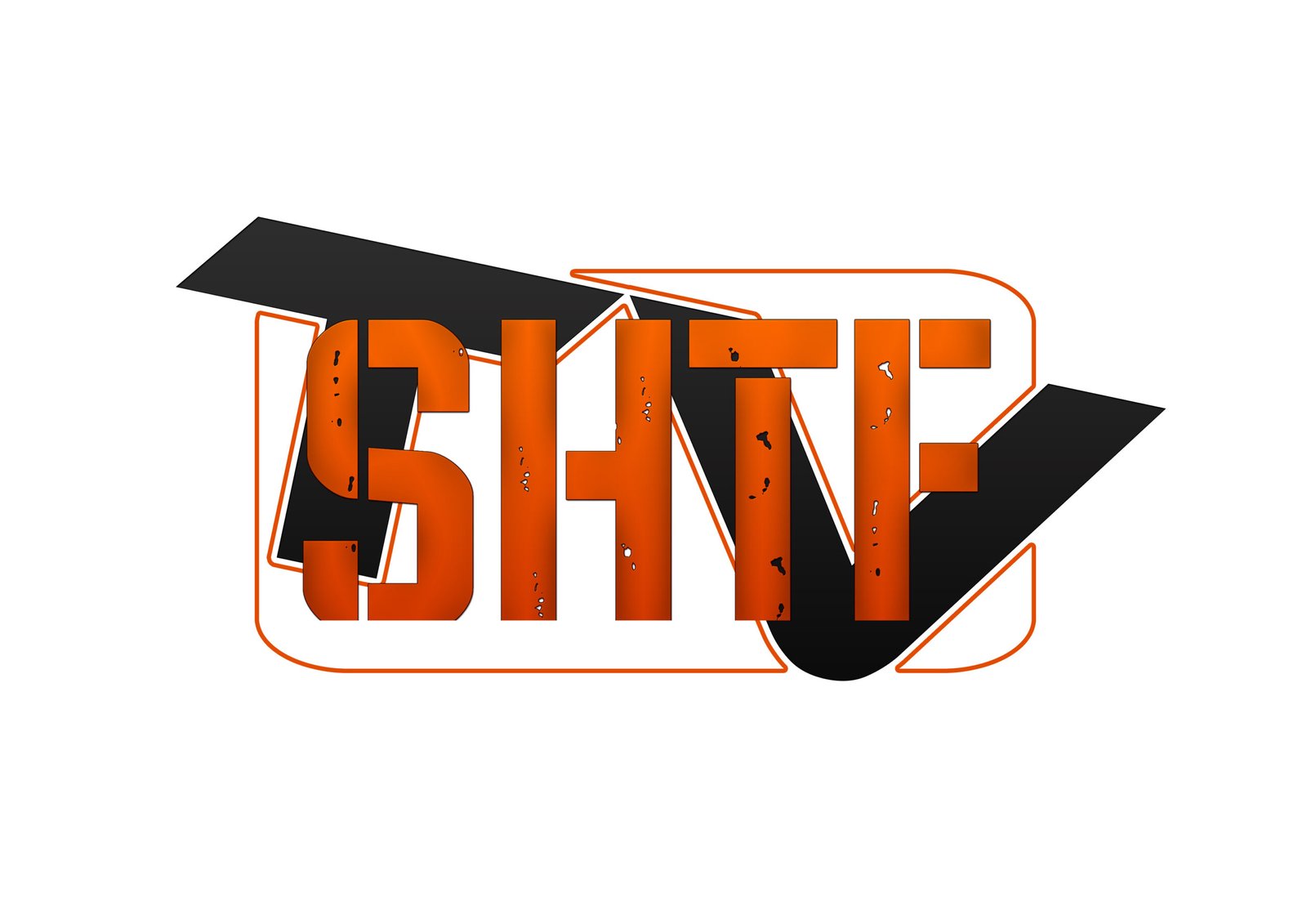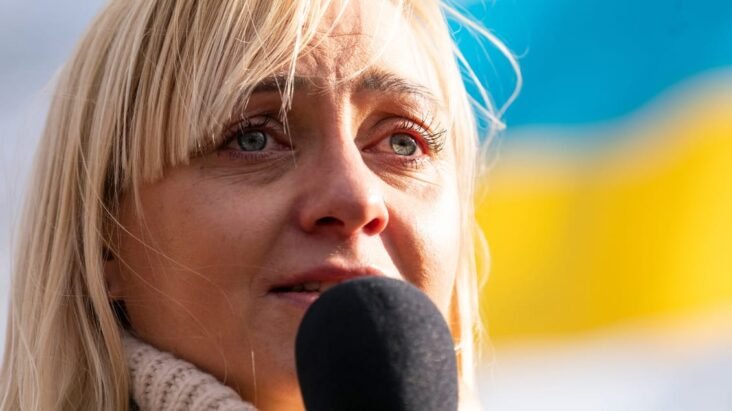
‘We’re fighting your war,’ says Oleksandra Ustinova, head of Ukraine’s parliamentary commission on arms

A leading member of the Ukrainian parliament delivered stark warnings to Canadian politicians and top defence officials this week in a series of mostly under-the-radar meetings in Ottawa ahead of the long-anticipated aid vote in the U.S. Congress.
Oleksandra Ustinova, the head of Ukraine’s special parliamentary commission on arms and munitions, told Defence Minister Bill Blair, members of key House of Commons committees and military leaders that both time and weapons stocks are running out for her country.
“The message is very clear. There is urgency, and Ukraine is going to lose if there is no more support coming,” Ustinova told CBC News.
The U.S. House of Representatives voted on Saturday in favour of legislation that included aid for Ukraine, part of a wider $95-billion US package that also includes support for Israel and Taiwan.
Saturday’s vote puts an end to a months-long holdup involving more than $60 billion in U.S. support for the embattled eastern European country. Russian forces have made slow and steady gains on the battlefield and have pummelled Ukrainian cities in a series of missile and air strikes.
WATCH | Ukrainian MP asks for more support:
Ukrainian MP Oleksandra Ustinova says expected U.S. aid will help her country hold its front line against Russia, but more is still needed. Ustinova joins CBC’s chief political correspondent Rosemary Barton to talk about her visit to Canada and what Ukraine is asking for.
The North Atlantic Treaty Organization convened a special virtual meeting of defence ministers on Friday, where they committed to helping Ukraine tighten up its air defences.
“NATO has mapped out existing capabilities across the alliance and there are systems that can be made available to Ukraine,” said NATO Secretary General Jens Stoltenberg.
It’s those existing capabilities and inventory, coupled with air defence, that Ustinova was interested in as she met with Canadian officials and toured Camp Petawawa, a major military base near Ottawa, earlier this week.
In particular, she was interested in Canada’s stock of new and retired armoured vehicles. She said she doesn’t buy the argument that old, broken-down light armoured vehicles are not fit for donation.
“Ukrainians are ready to take even junk, tear it apart and make one out of three machines. This is something that can protect our soldiers,” Ustinova told CBC News.
“There [is] a lot of stuff that can be donated but it’s not, for some reason. And I don’t understand why because, for example, Canada has a lot of armoured vehicles. Like LAVs that you produce yourself. What is the problem to transfer those to the Ukrainian army?”
According to figures put before the House of Commons last year, the Canadian army has 195 LAV II Bisons and 149 Coyote armoured reconnaissance vehicles that are being taken out of service.
The Department of National Defence (DND) also says 67 tracked light armour vehicles (TLAVs) out of a fleet of 140 are awaiting final demilitarization and disposal, or are being used as a source of spare parts for the 73 vehicles still in service.

The Canadian military is slated to take delivery of 621 upgraded LAV III vehicles, which are being converted into LAV VIs.
Ustinova said she finds it hard to understand why Canada can’t part with any of those vehicles.
“It’s much more effective, I would say, to support Ukraine in our fight right now, and to give us the stuff we need, so you don’t have to fight later,” she said.
Canada already has given Ukraine eight Leopard 2A4 tanks, 39 new armoured combat support vehicles and 208 Roshel Senator armoured four-by-fours. It also promised during President Volodymyr’s Zelenskyy’s visit to Ottawa last year to buy additional 50 armoured vehicles for Ukraine; six months later, that contract has yet to be finalized.
Ustinova said Canada could help by going to third countries to purchase air defence missiles, which are in short supply.
“A lot of countries in the world are doing that,” she said.
“We have Denmark. We have the Netherlands. We have Great Britain that is literally buying us stuff from other countries. Why can’t Canada write a check and buy us the missiles for air defence to protect our population?”
Canada does not have its own dedicated air defence systems to protect either military or civilian targets, so it can’t raid its own inventory.
It has, however, contributed $30 million toward an allied coalition that is attempting to procure systems and missiles to protect Ukrainian skies. Earlier in the war, Canada donated both new and used AIM air-to-air missiles.
The Liberal government’s recent federal budget set aside $2.7 billion in aid for Ukraine this year, most of it in the form of loans to keep the country’s war-ravaged economy afloat. Roughly $320 million has been set aside for military assistance.
That, according to the Ukrainian-Canadian Congress, represents a reduction in support when compared with previous years.
“Planned military aid to Ukraine for this year, approximately $320 million, represents a decrease in military aid as compared to 2023 and 2022 and falls short of the military aid committed by other allies of Ukraine — for example, the U.K., Germany, France, Denmark, the Netherlands — who have committed far more military assistance in both real numbers and relative to GDP,” the organization said in a statement earlier this week.
Speaking to CBC Radio’s The House two weeks ago, Finance Minister Chrystia Freeland chided the United States for being “unable to step up” on aid to Ukraine.

“In March, Canada sent $2 billion in urgent budget financing support to Ukraine at a time when the U.S. — and this is maybe something you could ask the U.S. ambassador about — at a time when the U.S. has been unable to step up and provide support for Ukraine. We were there to fill the gap,” Freeland said.
Ustinova said that, even after her meeting in Ottawa, she remains puzzled by Canada’s reluctance to part with more military aid in the midst of a shooting war.
“We’re fighting your war,” she said.
“We are protecting the world right now and we’re not asking for boots on the ground. All we’re asking is, help us protect our soldiers, help us protect our population.
“Canada has been very supportive and helpful in terms of supporting our budget, but again, when we talk about the military, I still think there is a very low understanding of the real needs.”






